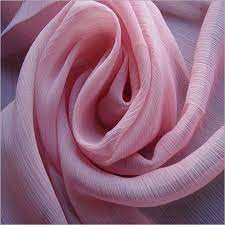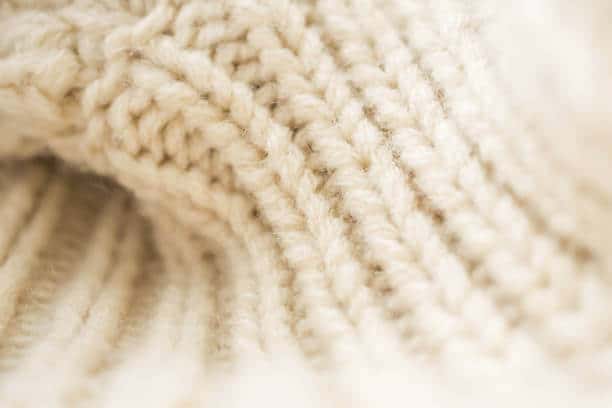Simply being fashionable isn’t enough; top-tier fashion designers meticulously consider the fabrics they work with, recognizing their profound impact on quality. The choice of fabric is pivotal in determining the excellence of the end product.
In this ultimate guide, we explore different dress fabric types, applications, and care tips to help you make the best choice.

Image Source: YouTube
Dress Fabric Types: An Overview
The terms “fabric” and “textile” are used interchangeably. Raw fibers undergo twisting to create threads, which are then woven or knitted to form a workable material for garments.
Fibers can be synthetic or natural, with cotton being the most common natural fiber and polyester the most popular synthetic one. Each fiber type has unique characteristics; some are rugged and thick, while others are smooth and flexible.
Throughout history, fabric has been a symbol of culture, wealth, and artistic skill. Today, it’s integral to fashion, interior design, automotive, and aerospace industries, offering unique properties for various applications.
Fabric is essential in everyday life, from clothing to interior furnishings and beyond. Understanding fabric types aids in selecting the right one for your needs. Let’s delve in!
Understanding the Diversity of Fabrics
Understanding different fabric types is crucial. It’s like having a hidden superpower for wise choices. Fabric affects clothing comfort, durability, and feel.
Fabrics are generally grouped into three categories:
- Natural Fabrics: examples are Cotton, Linen, Wool, Silk and Hemp
- Synthetic Fabrics: such as Polyester, Nylon, Acrylic, Spandex and Rayon
- Blended Fabrics (combining natural and synthetic fibers): Cotton-polyester blend, Wool-acrylic blend, Silk-rayon blend, Linen-cotton blend, and Polyester-viscose blend
Simple Guide To Fabric Weights for Dressmaking
Considering fabric weight is crucial when selecting dressmaking fabrics. The weight affects how the fabric drapes and suits different seasons. Heavier fabrics are ideal for winter dresses, while lighter ones work well for summer styles.
Here is a detailed guide to fabric weights for dressmaking:
| gsm | Oz | Weight | Types of dresses |
| <136 | <4 | very light | silky, sheer, ultra-flowy and super lightweight dresses |
| 136-237 | 4-7 | light | t-shirt dresses, button-up shirt dresses, casual lightweight dresses |
| 237-305 | 7-9 | medium | sweater dresses, structured dresses |
| >305 | >9 | heavy | very heavy winter dresses – examples include wool or denim |
In addition to weight and thickness, you also need to understand the diversity of these fabrics, as discussed above. Stay abreast as we further consider the best dress fabric types and some care tips.
Top 8 Best Fabrics For Sewing Dresses
1. Linen

Image Source: Linen Club
Linen is a unique fabric that is derived from the flax plant, and it’s esteemed for its crisp, breathable nature. Its excellent moisture-wicking abilities make it ideal for hot and humid conditions.
The clean, lightly textured surface of linen gives a casual elegance to garments like blouses, skirts, and summer suits.
2. Rayon

Image Source: iStock
Rayon, often dubbed “artificial silk,” is a semi-synthetic fiber made from wood pulp. It offers the best of both worlds: the ease of synthetics and the adaptability of natural fibers. It is also a popular choice for clothing like blouses, dresses, and casual wear due to its softness.
Beyond its comfort in warm weather, rayon also absorbs moisture.
3. Chiffon

Image Source: Fibre2Fashion
Chiffon is a lightweight fabric crafted from fine weaves of silk or synthetic fibers. Its delicate, flowing texture makes it perfect for elegant clothing like scarves, formal dresses, and evening gowns, adding refinement with its translucent quality.
4. Spandex (Lycra)

Image Source: 123RF
Spandex, also referred to as Lycra or elastane, is a synthetic fiber and is prized for its remarkable elasticity. In 1958, at DuPont, chemist Joseph Shivers invented spandex, a polyether-polyurea copolymer.
This lightweight and smooth synthetic fiber possesses a unique stretchiness, making it ideal for stretchable clothing. Known as “elastane” in Europe and other regions, spandex is celebrated for its ability to provide flexibility and comfort in apparel.
5. Polyester

Image Source: Adobe Stock
Polyester is a synthetic fiber is gotten from a combination of ethylene glycol and terephthalic acid, shortened from its technical name, polyethylene terephthalate (PET). Known for its toughness, versatility, and affordability, polyester is favored for everyday clothing items like t-shirts, athletic wear, and outerwear. Its resistance to fading and wrinkles, along with its moisture-wicking properties, make it ideal for activewear.
6. Wool

Image Source: iStock
Wool is natural and extracted from sheep and other animals’ fleece and is prized for its exceptional warmth and insulation properties. Its unique structure allows it to absorb moisture and retain heat, keeping you dry and cozy in cold conditions.
Popular among clothing manufacturers for winter apparel, wool provides insulation without adding bulk, making it ideal for sweaters, scarves, and jackets.
7. Silk

Image Source: Pinterest
Silk fabric has a luxurious feel and shimmering appearance. This fabric is a natural fiber produced by silkworms. Highly prized for centuries, silk is celebrated for its softness, smooth texture, and lustrous sheen.
Silk drapes beautifully and has excellent moisture-wicking properties for comfort in both warm and cool climates. It is commonly used in high-end clothing, such as dresses, blouses, and formal wear. Its exquisite quality and timeless elegance make silk a symbol of sophistication and refinement.
8. Cotton

Image Source: Ubuy Nigeria
Often referred to as the “fabric of life,” —Cotton is a multifaceted and widely used natural fiber derived from the fluffy fibers surrounding the seeds of the cotton plant. Renowned for its softness, breathability, and durability, cotton is favored for a variety of applications.
Owing to its comfort and versatility, cotton is commonly used in clothing, ranging from everyday basics like t-shirts and jeans to formal attire like dress shirts and suits.
Dress Type Fabrics: Care Tips
To prevent shrinking;
- Hand wash fabric in cold water with mild detergent.
- Iron fabric when it’s slightly damp to ensure a smoother finish.
- Air drying or low-heat machine drying is recommended.
Final Thought
Understanding the different dress types of fabric is crucial for making informed decisions that directly impact comfort, style, and durability in our designs. Each fabric offers unique qualities and applications, whether it’s the warmth of wool, the luxury of silk, or the practicality of polyester.
Moreover, we encourage you to embrace fabric experimentation as it opens up artistic possibilities. In addition, Fabknitter has a collection of a wide variety of fabrics, which is best for your dress styling. You want to check them out!
